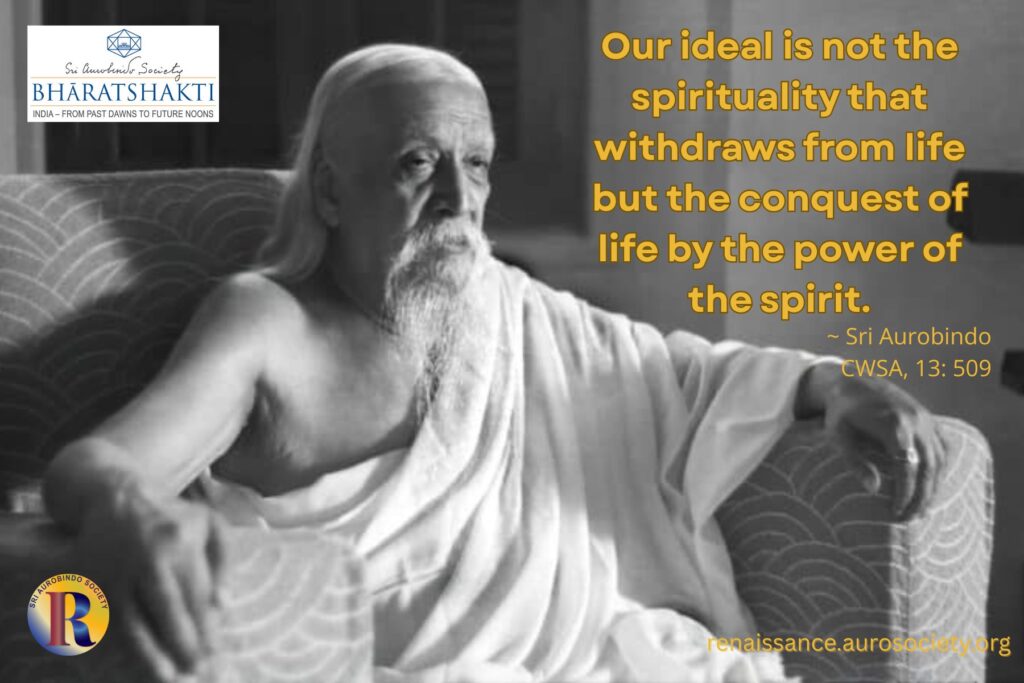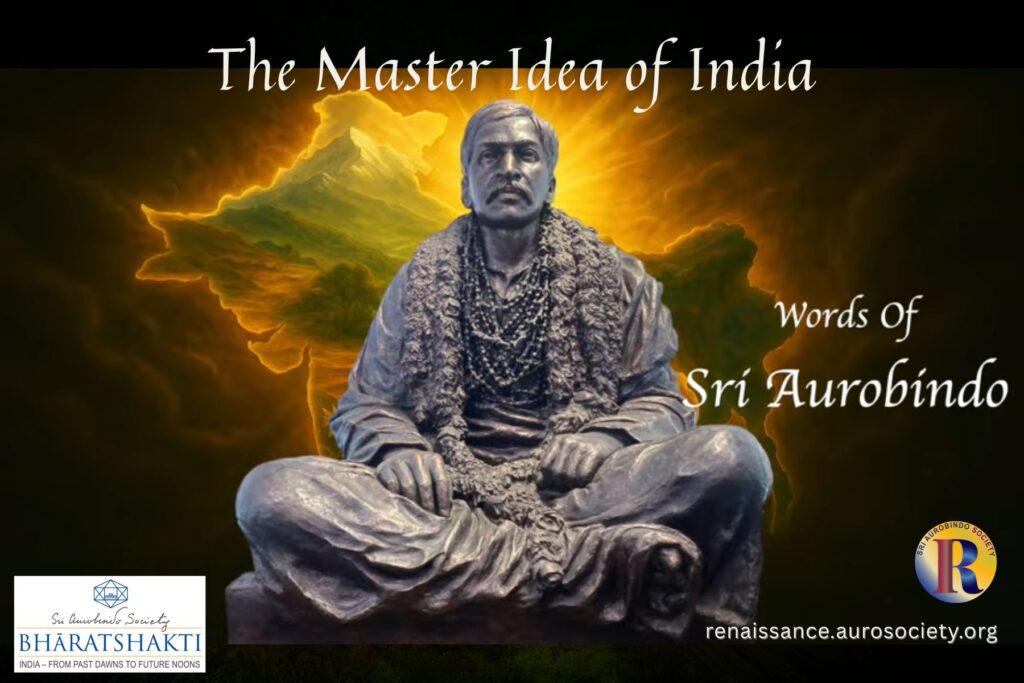Volume II, Issue 4
Author: Beloo Mehra
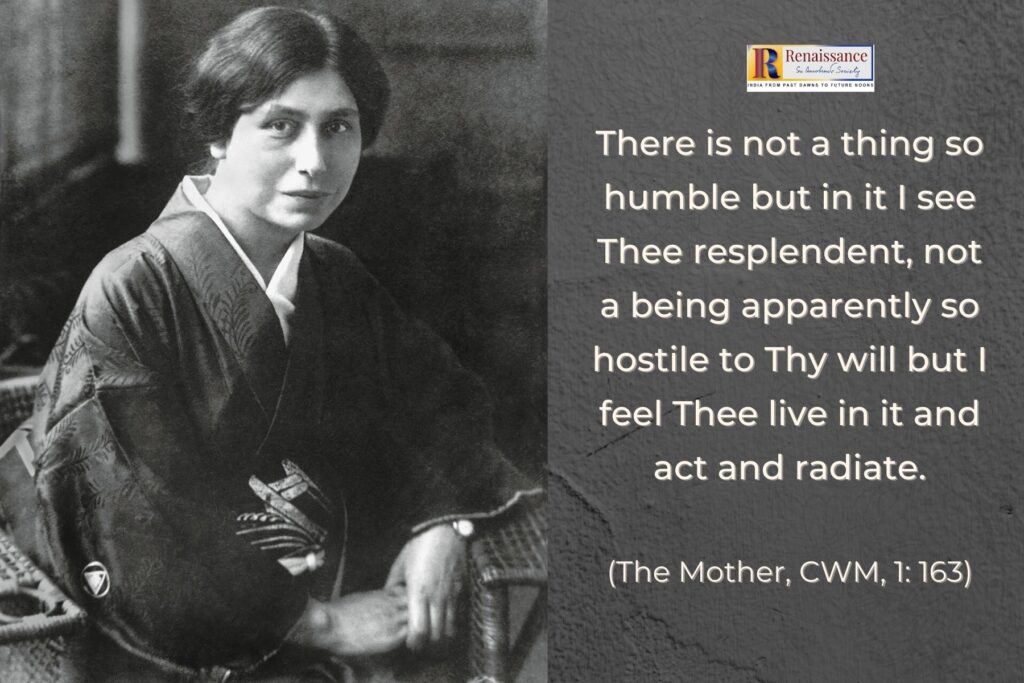
Namaskar!
The Rāmāyana begins with Rishi Vālmiki asking Nārad Muni if he knew someone on the earth who is endowed with all the great qualities of a perfect man. Nārad Muni then tells him of Rāma of Ikshwāku clan and recounts his various qualities.
Rāma is truthful, always does what is right and true, is just, courageous, firm in resolve, highly learned, wise, eloquent, handsome, extremely patient, free from all envy and pettiness, friend and protector of all but when fighting for the truth can strike terror into the hearts of bravest of men, and even the devatas. The muni adds that while it is almost impossible to find all these qualities in one individual, Sri Rāma not only possesses all these qualities and more, but he is also an epitome of true humility.
This rarest of rare combination is what has made Sri Rāma’s appeal truly timeless and universal in the religio-spiritual history of Indian, nay human civilisation. The Indian mind speaks of Sri Rama as an Avatār of the Supreme, a conscious descent of the Divine in an earthly form to open a new path for humanity’s and earth’s evolution.
Sri Aurobindo explains that Rāma was the avatār of the sattwic mind – mental, emotional, moral. His avatāric work was to fix for the future the possibility of an order proper to the sāttwic civilised human being who governs his life by the reason, the finer emotions, morality, or at least moral ideals, such as truth, obedience, co-operation and harmony, the sense of domestic and public order.
Rama established this possibility in a world still occupied by anarchic forces, the Animal mind and the powers of the vital Ego making its own satisfaction the rule of life. This work naturally required the avatār to perfectly embody the highest kind of humility and nobility, qualities which over time have been strongly stamped as the epitome of the highest Aryan character.
We find this Aryan character described beautifully by Sri Aurobindo:
Knowledge, devotion and non-attached activity are the root of an Aryan education; liberality, love, courage, energy, modesty are signs of the Aryan character.
(Sri Aurobindo, Bengali Writings, Dharma, August 1909)
DON’T MISS: HUMILITY, NOBILITY AND ARYAN CHARACTER
Only the Divine, the One who is Absolute Perfection, can be Absolutely Humble, said the Mother. She spoke of this Perfect Divine Humility in a remarkable passage when she said that the very possibility of transformation of Matter is indicative of the perfect humility of the Divine. Only the Divine Will and Grace can transform the most undivine into its most divine form, and yet the Divine stays humbly hidden behind all the limitations and falsehoods and stumblings of Mind, Life and Matter.


And if one were to really grasp the essence of Divine Humility, one could simply meditate on this most beautiful little poem of Sri Aurobindo, simply titled ‘God.’ I need not say anything about the poem. Read it with a quiet heart and mind, and you will feel its truth reverberating within. As I did when recording it for this editorial.
Listen to the poem below.
“Therefore we know by that humility, That thou art God.” One can simply meditate on this one line for hours. Absolutely beautiful in its force and power, in its perfect description of the nature of Divine.
And yet, one may not grow at all in humility if one is not willing to take a sincere look at oneself. Sincerity and humility go together; they are our biggest safeguards, the Mother reminds us. We live in the times of social media when a person’s social status (or professional status in some cases) is often determined by how many ‘likes,’ ‘comments,’ and ‘shares’ he or she receives on his or her ‘status update’. Or by the number of followers one has on Instagram and Twitter.
Running in the race to be more ‘liked’ or ‘retweeted’ one could eventually end up spending much precious time and energy figuring out how to become more popular, more successful and a bigger ‘influencer’ on social media! All this keeps building up one’s ego — individual ego, and also collective ego of the ‘followers’ of the ‘influencer’ whose words are directly or indirectly shaping the collective thought-process of that particular group.
Obviously, there is much good that can and does result from social media, but this is not the place to go into a discussion on the good, the bad and the ugly of the social media. Suffice to say that as long as one’s actions are driven by any pull or push or desire or craving or impulse of the ego, regardless of whether it is done for promoting oneself or one’s favourite cause — howsoever altruistic, noble and worthy the ’cause’ may appear — the action remains mixed with falsehood and so is its outcome.
The working of ego is highly subtle, and we may go deeper and deeper into its grip if we fail to recognise the myriad forms in which it continues to assert and express itself.
In his divine compassion, Sri Aurobindo has elaborated on the various forms egoism can and does take in several of his letters on yoga. At one place he speaks of the “disguised forms of egoism” which can also be reflected in a thought such as – ‘I am working for the Mother.’ An aspiration to become an ‘instrument of the Divine’ can also very quickly become an egoistic pursuit.
Sri Aurobindo also speaks of humility having its own ego, like any other virtue. If we aspire to walk the path to a deeper, truer inner transformation, we must with all sincerity and honesty look within and become conscious of the myriad forms through which the ego exerts its power and influence, including pride, vanity, ambition and so many other subtle ways.
See:
EGOISM AND ITS FORMS: BECOMING CONSCIOUS WITH GUIDANCE FROM SRI AUROBINDO
In India, for millennia, modesty or humility has been considered the most noble virtue, one that is the ornament of all virtues. In present times when self-promotion is not only an acceptable practice but has actually become a highly sophisticated skill that one must master if one wants to be ‘successful’, humility often takes a backseat.
But if we step back for a moment and reflect carefully we may find that it is exactly in times like these that we must examine what is meant by true humility. And more importantly, how it is related to our inner journeys, our growth as conscious individuals with an aspiration to grow inwardly and walk the path that takes us closer to our highest Self within.

The present issue is dedicated to exploring Humility as one of the Twelve Powers which the Mother spoke of as necessary for the full manifestation of Her Work.
Readers will find some profound explanations and thought-provoking passages from the writings and conversations of the Mother and Sri Aurobindo on the true nature of humility – spanning from spiritual to social realms. These are carefully compiled and presented in our Guiding Light section as well as a few other articles such as – Of Woman, Man and Humility; and Of Caste, Hierarchy and Humility.
One Bengali writing of Sri Aurobindo from Dharma, titled Ahankāra, explores the sattvic, rajasic and tamasic ego, while an excerpt from one of his conversations highlights how an outward exhibition of humility is not what is meant by true humility, which is an inner quality of the soul. When going through any of these offerings, let us also remember that humility, quietude and receptivity are some of the fundamental qualities we all need when approaching the Works of Sri Aurobindo and the Mother.
In a delightful talk, titled ‘Sri Aurobindo, the Perfect Gentleman,’ given on June 12, 1970 at Sri Aurobindo International Centre of Education and later published in Mother India, Nirodbaran has masterfully brought out two most adorable qualities of the magnificent personality of Sri Aurobindo — the most divine nobility and a perfectly sincere humility. We present this talk in two parts in this issue.
Nolini Kanta Gupta‘s small but profound essay emphasises true humility is “unreservedly humble, as it envisages the immensity of the labour the Divine has undertaken, sees the Grace, infinite and inscrutable, working miracles every moment: and it is full of gratitude and thanksgiving and quiet trust and hopefulness.”
A timeless story told by the Mother – Japanese Flower-artist – which highlights the gentlest practice of modesty, is presented in English and a few Indian languages. Another story told by Swami Sivananda, Parable of the Snake and the Rat, highlights the value of vigilance, which as the Mother also reminds us, is indispensable for all true progress. Vigilance against flattery and ignorant praise are essential if one wants to cultivate true humility. One is reminded of the words of the Mother:
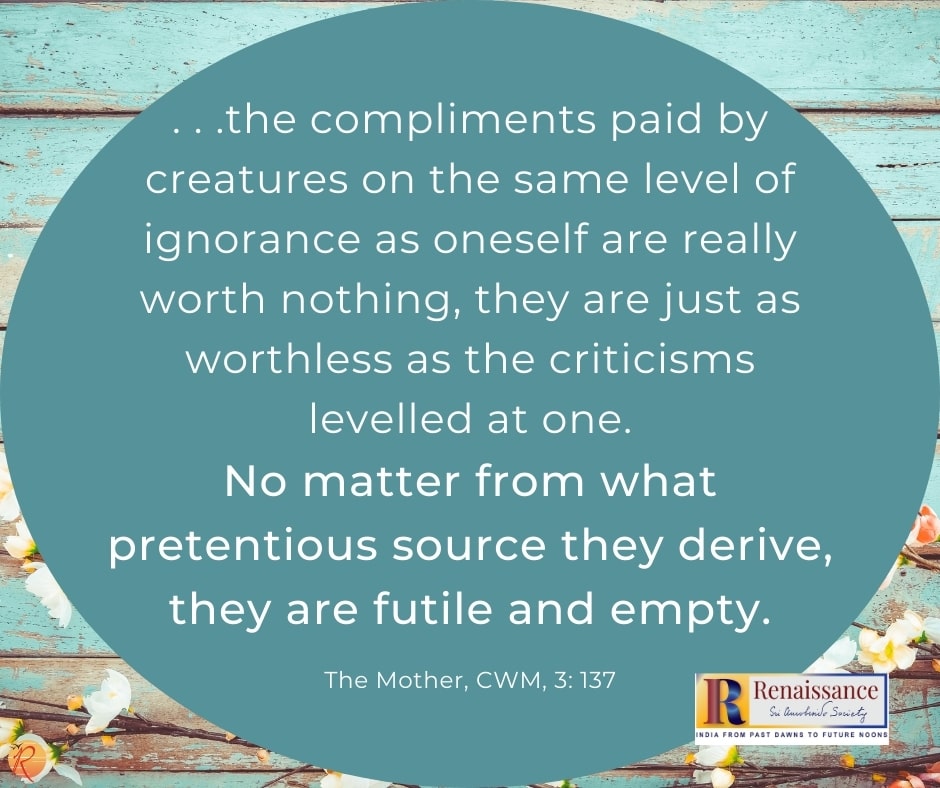
Our regular contributor, Sheeba Naaz writes another meditative piece, this time on the humble dropseed flower which has been given the spiritual significance ‘Humility’ by the Mother. A story and a bit of guidance from one of the yogasutras by Patanjali are invoked by the author to help deepen the reader’s awareness of humility.
We also bring for our readers the next part in our two ongoing series – Part 3 of M. P. Pandit’s Sri Aurobindo on Isha Upanishad, and Part 4 of सर्वे सन्तु निरामयाः – May All be Free from Illness.
Also see: Wise Sayings on Humility
In our regular feature – Insightful Conversations – we bring this time a fascinating conversation with Madhu Jagdhish, a heritage photography enthusiast, with extensive experience in documenting the rich Indian heritage of temple sculptures. A thoughtful exposure to our culture’s artistic heritage and an overall development of aesthetic sensibility and artistic appreciation are important parts of any meaningful education.
In the age of smartphones with photography becoming available at fingertips, it is important that youngsters interested in exploring photography as an art-form and a possible vocation are shown this possibility that photography can also become a great medium to go deeper into one’s cultural roots and in the process discover and reveal (for oneself and for others) the rich artistic and aesthetic traditions that we have inherited. In this regard, Madhu Jagdhish’s work makes a significant contribution.
One of the things anyone notices after spending even a little bit of time with the marvels of the great Indian artistic heritage is the absence of the names of sculptors or artists. The Indian virtue of humility in action, it seems! When art was created as an offering for the Divine, where was the need to put the artist’s signature on the artwork?
As I reflected on this remarkable feature of Indian artistic tradition, among many others, it seemed appropriate to bring for our readers a few insights on Indian Art from Sri Aurobindo’s vast writings on the topic. A small digital exhibit has been put together to give our readers a deeper flavour of Madhu Jagdhish’s photographic work, which has been enhanced in its significance by selected passages from Sri Aurobindo on the inner beauty and significance of Indian Art.
Don’t miss:
Sri Aurobindo on Indian Art: A Photo-exhibit by Madhu Jagdhish
Our ‘Book of the Month‘ feature pays homage to one of the most celebrated poets of Hindi, Maithilisharan Gupt. We have selected excerpts from his most famous work, Bhārat Bhārati, which stirred deep nationalist emotions among Indians when it was first published in 1912. Today when the Indian mind is trying to rediscover what is true Indian-ness, the attacks from all kinds of falsehoods are also becoming intense. It is important to recall the kind of emotional fervour with which Indians had fought against the oppressive forces.
The enemy today is mostly within, yet the battle is very real. A deep introspective journey is critical to identify what the true Indian-ness is and how we may imbibe that in us, for that is our true weapon in the battle today against falsehood. Maithilisharan Gupt’s poem gives us a waking call, so to speak, which is just as relevant today as it was during the freedom struggle. Since the month of September sees Hindi Diwas (September 14), it is befitting to feature excerpts from this important poetic work in Hindi.
Poetry seems to be the flavour of the month at Renaissance. From the submissions received on the theme of Humility, we have selected three poems for publication in this issue. Each of these young poets – Harvinder Pal Kaur, Sushrut Badhe and Imran Ali Namazi – have expressed three different shades of humility in their verses.
We hope our readers will enjoy going through this issue and find much to reflect upon in these diverse offerings.
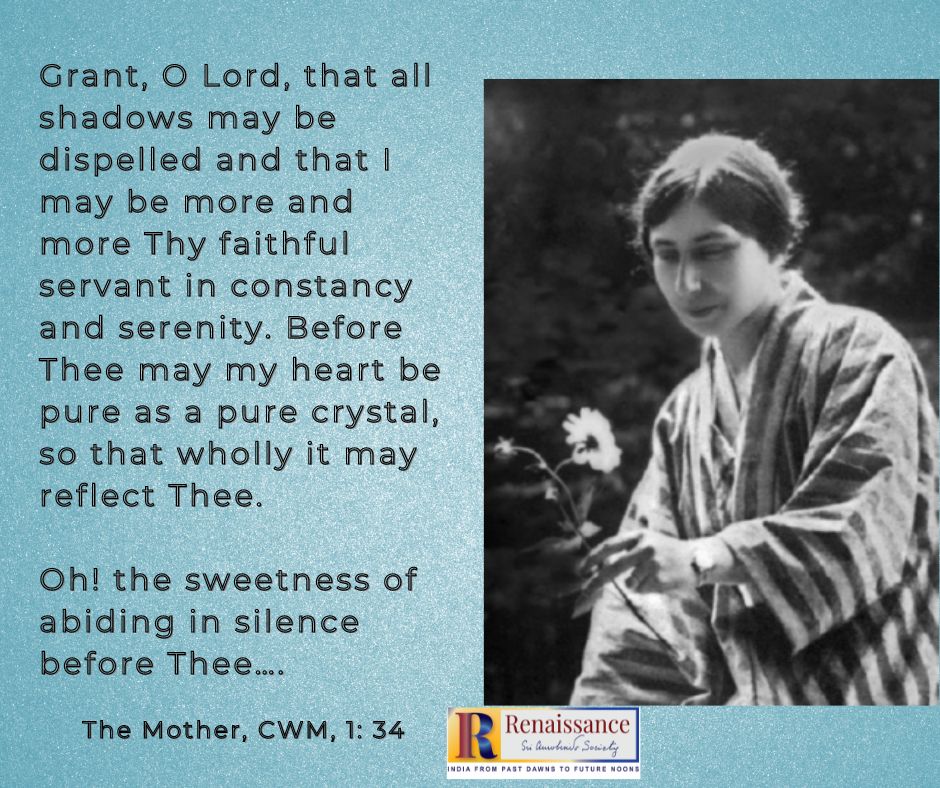
As I come to the end of this editorial I recall one of the prayers of the Mother in which the Mother is praying to the Divine on behalf of all aspiring humanity and asking for a boon to dispel all the darkness and shadows within, so that one may grow in true humility and true spirit of serving the Divine. With these words reverberating within, I offer this work at the lotus feet of Sri Aurobindo and the Mother.
In gratitude,
Beloo Mehra (for Renaissance Editorial Team)

~ Graphic Design: Beloo Mehra

